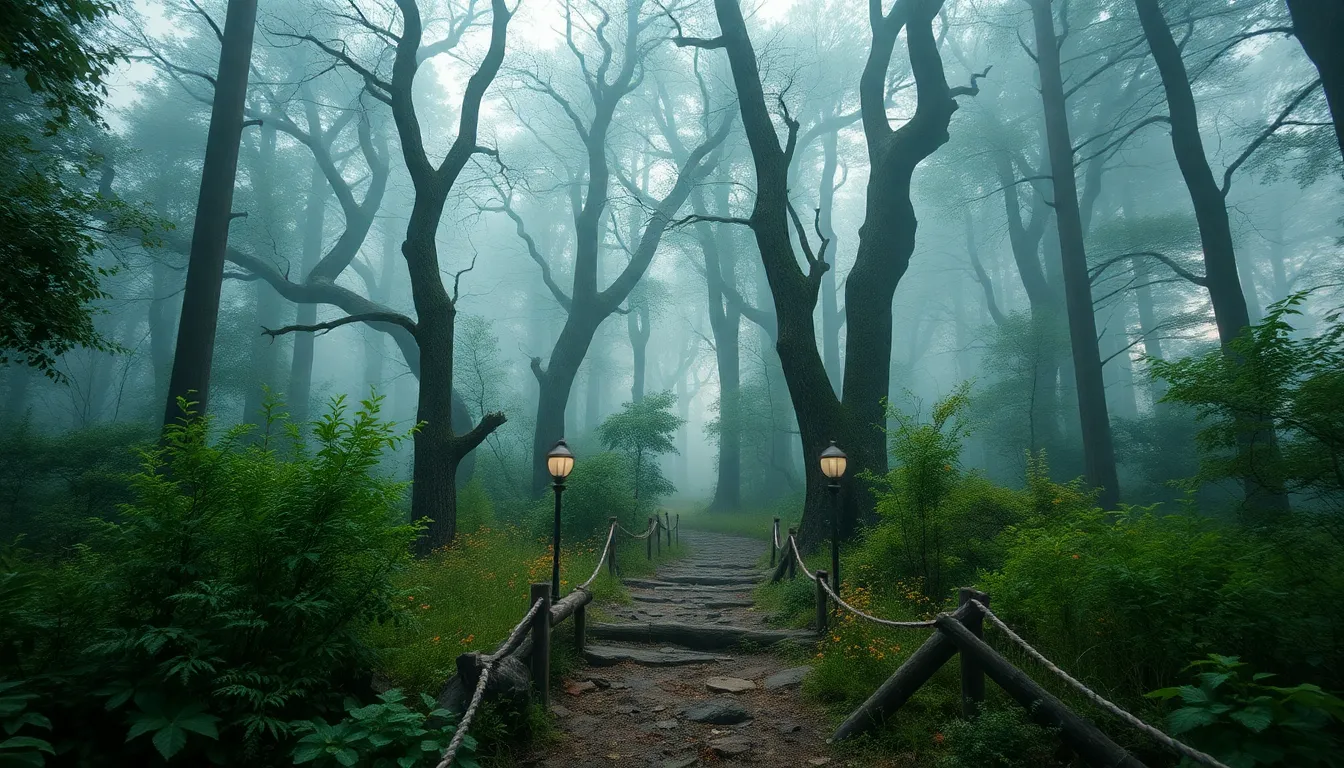The Enchanted Forest: A Tapestry of Nature and Myth
I. Introduction to the Enchanted Forest
The concept of the enchanted forest is deeply ingrained in folklore across various cultures. These mystical woods are often depicted as realms where magic thrives, and the natural world intertwines with the supernatural. The significance of enchanted forests lies not only in their beauty but also in their role as a backdrop for countless stories that explore the human experience.
In many myths and legends, nature serves as a powerful force that shapes events and characters. Enchanted forests are places where the ordinary turns extraordinary, allowing individuals to encounter mythical beings and embark on transformative journeys. Today, the allure of the enchanted forest continues to captivate our imagination, inspiring literature, art, and popular culture.
II. Historical Roots of Enchanted Forests
Throughout history, civilizations have held a profound connection to forests. Ancient peoples viewed these natural spaces as sacred, often believing that they were inhabited by spirits and deities. The evolution of myths surrounding forests reflects humanity’s relationship with nature and the mysteries it holds.
Some famous historical enchanted forests include:
- The Black Forest in Germany, known for its dense foliage and tales of witches and folklore.
- The Forest of Brocéliande in Brittany, France, associated with Arthurian legends.
- The Forest of Arden featured in Shakespeare’s play “As You Like It,” symbolizes freedom and natural beauty.
III. Flora and Fauna: The Natural Wonders of Enchanted Forests
Enchanted forests are home to a diverse array of plant species, many of which carry mythical associations. Unique flora such as:
- Mandrake: Often linked to magical practices and folklore.
- Wolfsbane: Traditionally associated with werewolves and transformation.
- Foxglove: Believed to be a favorite of fairies.
The animal inhabitants of these forests also play significant roles in the narratives. From wise old owls to mischievous foxes, creatures often embody traits that symbolize deeper meanings. Some animals are seen as guardians of the forest, while others may serve as tricksters, challenging travelers with riddles and tests.
Biodiversity is crucial for maintaining the enchanted forest ecosystem. This rich variety of life supports not only the plants and animals but also the intricate relationships that define these magical places.
IV. Legendary Creatures of the Enchanted Forest
Enchanted forests are often populated by legendary creatures that embody the essence of magic and mystery. Among them, fairies and elves are perhaps the most well-known, representing the enchanting and whimsical aspect of nature. Fairies are often depicted as benevolent beings who protect the forest, while elves are sometimes portrayed as guardians of ancient wisdom.
Mythical beasts such as dragons and unicorns also find their home in these woods. Dragons symbolize power and chaos, while unicorns represent purity and grace. These creatures often serve as metaphors for the human experience:
- Dragons: Challenging the hero’s journey and representing inner fears.
- Unicorns: Symbolizing hope and the pursuit of the unattainable.
V. Cultural Representations of Enchanted Forests
The representation of enchanted forests in literature can be traced from ancient fairy tales to modern fantasy novels. Classic works such as “A Midsummer Night’s Dream” by Shakespeare and “The Chronicles of Narnia” by C.S. Lewis highlight the transformative power of these magical woods.
In the realm of art, enchanted forests have inspired countless artists across mediums:
- Painting: Artists like Caspar David Friedrich capture the ethereal beauty of forests.
- Sculpture: Works that incorporate natural elements evoke the spirit of the forest.
- Digital Media: Video games and animations bring enchanted forests to life, immersing players and viewers in their magic.
Moreover, enchanted forests have a profound influence on film and storytelling, with movies like “Pan’s Labyrinth” and “The Secret of NIMH” showcasing the deep connection between nature and narrative.
VI. The Enchanted Forest in Different Cultures
The concept of enchanted forests varies across cultures, each offering unique tales and insights. In Europe, enchanted forests are often linked to fairy tales that warn of dangers and moral lessons, while in Asia, sacred groves hold spiritual significance.
Notable cultural perspectives include:
- European Enchanted Forests: Filled with folklore about witches, fairies, and enchanted beings.
- Asian Sacred Groves: Often regarded as sacred spaces where ancestors and deities reside.
- Indigenous Perspectives: Many indigenous cultures view forests as living entities, integral to their identity and spirituality.
VII. The Psychological Impact of Enchanted Forests
Enchanted forests resonate with the human psyche, often symbolizing the subconscious mind. The forest can represent both a place of refuge and a mysterious labyrinth of the unknown. Immersion in nature, particularly in these magical settings, offers numerous emotional benefits:
- Reduction of stress and anxiety.
- Enhanced creativity and inspiration.
- Improved mental well-being through nature therapy.
Additionally, enchanted forests frequently appear in dream symbolism, embodying themes of exploration, transformation, and the quest for knowledge.
VIII. Conservation and Preservation of Enchanted Forests
Despite their magical allure, enchanted forests face significant threats in the modern world. Deforestation, climate change, and urbanization jeopardize these natural spaces. It is essential to recognize the importance of conserving both biodiversity and cultural heritage.
Efforts to preserve enchanted forests include:
- Establishing protected areas and national parks.
- Promoting sustainable forest management practices.
- Encouraging community involvement in conservation initiatives.
IX. Exploring Real-Life Enchanted Forests
For those wishing to experience the magic of enchanted forests firsthand, several notable locations around the world beckon:
- The Forest of Dean in England: Rich with history and legends.
- Redwood National and State Parks in California: Home to some of the tallest trees on Earth.
- Aokigahara Forest in Japan: Known for its unique beauty and cultural significance.
Visitors to these enchanted forests can engage in various activities, including hiking, wildlife watching, and photography. However, respecting the environment is crucial. Here are some tips for responsible exploration:
- Stay on designated trails to minimize impact.
- Leave no trace: pack out what you pack in.
- Educate yourself about the local flora and fauna.



